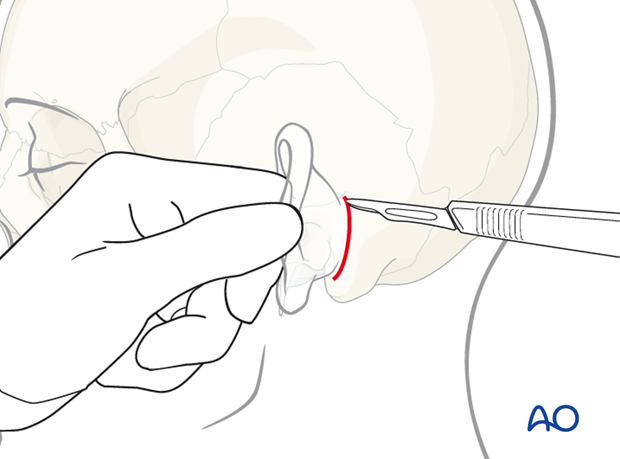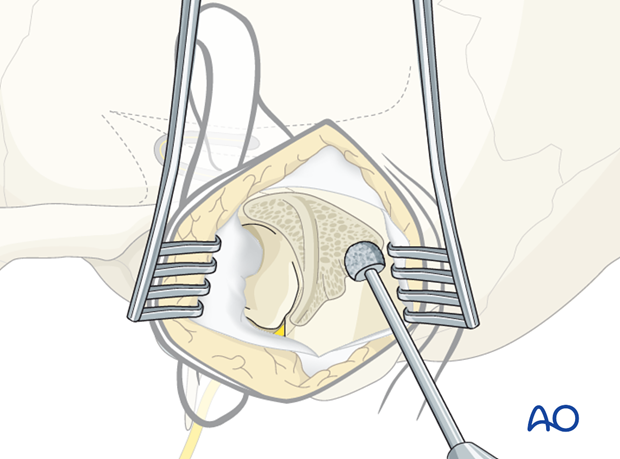Transmastoid approach
1. Transmastoid approach for facial nerve decompression
Introduction
The transmastoid approach is used for facial nerve decompression. A postauricular incision is commonly used to access the mastoid.

Incision
A postauricular incision is commonly used to access the mastoid. The incision is taken through the skin, subcutaneous tissues, and down to the periosteum.

Headline placeholder
The periosteum is then incised in a T-shaped manner, and the mastoid bone is exposed.

Exposure of the facial nerve
The mastoid cortex is drilled off in a triangular fashion with the superior limb of the triangle paralleling the tegmen. The anterior limb of the triangle parallels the posterior wall of the external auditory canal.

With the antrum fully exposed, the outline of the facial nerve, which is completely encased in bone, is found just anterior to the outline of the horizontal semicircular canal. The nerve is exposed by carefully thinning the bone with a diamond burr using constant irrigation for cooling. Once the bone is thin enough, the nerve is completely exposed by lifting the remaining bone using a pick or another instrument.













